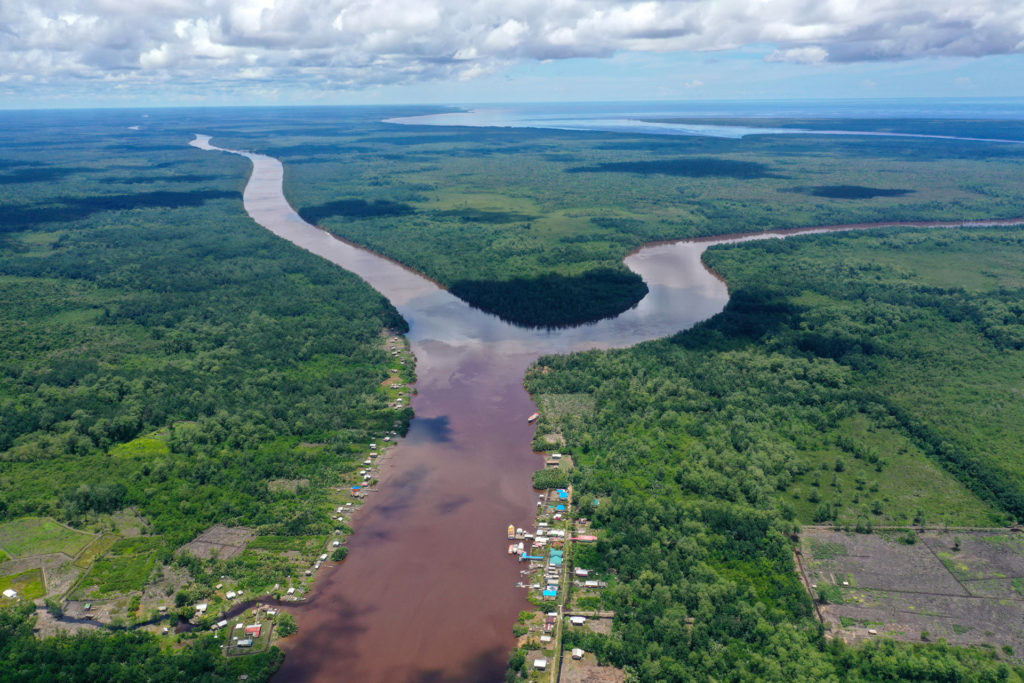Growing up in Pomeroon, Guyana, I always heard how blessed we were, having gold, diamonds, bauxite, timber, and now oil and gas. As we feel the irrefutable effects of the climate crisis — from extreme rainfall and flooding to forest fires after harsh dry spells — responsibly managing these natural resources requires a delicate balancing act.
But we are up to the task, because we are also blessed with the second highest percentage of forest cover on earth — some 18 million hectares that can store 19.5 gigatonnes of carbon. It positions us as a carbon negative country, and is our biggest weapon in this fight against climate change.
As early as 2009, Guyana developed a ground-breaking low carbon strategy that has become a global model for valuing forests. A Norwegian-backed programme helped us keep our deforestation below half a percent, and we now have a much better understanding of the immense value of all our ecosystems. Guyana’s 2030 goals now include preserving our biodiversity and watersheds, while building our blue economy.
One of the keys to achieving these goals is developing strategic partnerships between our public, private, and non-governmental organisations, while actively involving our Indigenous communities — particularly those that live in and around invaluable ecosystems like the Barima Mora Passage. Located in the northwest of Guyana, close to the Venezuelan border, this incredible place is where I have spent much of the last two years through my work with the Guyana Marine Conservation Society (GMCS), which I founded in 2000.
•
The Barima Mora Passage falls within the critically important Amazon ecoregion. Getting there is easy, with daily flights from the Eugene F Correia International Airport in Georgetown. After just under an hour in the air, you are in the tree-lined avenues of Mabaruma, the administrative centre of the Barima-Waini region. From there, a 45-minute boat ride up the Arouca then Barima rivers places you at the heart of the Barima Mora Passage.
At any time of day, you can be greeted by thousands of scarlet ibis perched on the mangrove-fringed riverbanks. Early morning or late afternoon boat rides offer an experience like no other when huge flocks of noisy Amazonian parrots converge. Members of the Warrau community — one of Guyana’s nine Indigenous peoples — lead tours that can guide you through this natural wonderland, home to several threatened species like the giant anteater, giant river otter, jaguars, pumas, white-lipped peccary, and manatees.
Spanning 47,000 acres, the region’s intact mangrove forests store five times more carbon than any other forest, and its peatlands and wetlands store even more carbon than mangroves. It is also home to the Warrau, whose sustainable use of the natural resources has preserved this invaluable ecosystem for thousands of years.
This region is also a gateway to Venezuela, and consequently has seen significant increases in migration. This has put pressure on the environment from the clearing of mangroves for housing and farming, as well as from hunting and wildlife trapping. It has required proactive solutions to safeguard this precious ecosystem, as well as the livelihoods of the area’s Indigenous peoples.
•
Also in the Barima-Waini region, and adjacent to the Passage ecosystem, is the Shell Beach Protected Area — an important nesting ground for four turtle species, and teeming with rich natural and Indigenous heritage. In 2011, the GMCS played a key role in getting Shell Beach formally designated as a protected area — the only one of its kind in the country. This put us in a great position to begin developing a partnership with both the regional administration and the Indigenous communities to preserve the Barima Mora Passage as well.
We’ve been making significant progress since we began in 2020. One of the most significant achievements was establishing the region’s first fully solar-powered research centre in Imbotero — born out of a crisis that we were able to turn into an opportunity. Last year, unprecedented erosion at some of the beaches along the 100 kilometres of Shell Beach saw as much as 30 metres lost in one month to the raging Atlantic Ocean — placing the health and education buildings on Shell Beach under threat.
It turned out to be more economical for the regional administration to construct brand new buildings on higher ground much farther away. So we proposed that the compromised buildings be relocated to the Warrau community of Imbotero further north, where we were able to recycle and repurpose them into this landmark research centre.
To visit Indigenous communities like those at Imbotero today is like stepping through a time machine, and experiencing life as it was hundreds of years ago. There are about 500 living in this Warrau community, including migrants who settle on the banks of the Barima River, and the original families who live on the banks of the adjoining Imbotero Creek. Its residents subsist on fishing, farming, catching crabs, and creating gorgeous handicraft.
Research tourism offers a tremendous opportunity here, providing much needed income to the villagers, who will provide essential services to national, regional and international researchers, as well as to visitors who have an interest in wildlife and Indigenous culture.
Through funding from the Global Environmental Facility Small Grants Project, we’ve been developing tools for the conservation and co-management of the Passage. One of them is a partnership with the renowned Iwokrama International Centre for Rainforest Conservation and Development.
Several groups of Warrau have already participated in exchange visits to Iwokrama, where they were trained in research tourism and natural resources management. After they returned home, we established the Barima Mora Passage Natural Resource Management Committee, comprising the leaders of the Indigenous communities as well as relevant agencies. The trainees are also actively passing on their knowledge to the members of the Wildlife Club at Imbotero, which uses the research centre as its base.
But one of the most exciting parts of this project for me — as a pilot myself and an Indigenous woman — is an innovative drone monitoring programme that specifically benefits young women. Compared to the boys, whose options include working in mining, forestry and fishing, the girls traditionally have much fewer opportunities.
This new programme equips several girls with training in the use of drones at Iwokrama. Their instructors are Iwokrama Rangers, whose use of drones to monitor the one million hectares of their protected area has already helped curb illegal mining and timber extraction.
When the girls have received sufficient training and experience, they will be charged with their own drones, and together will form the first Indigenous girls drone unit in Guyana. They will also be able to earn income wherever they may be needed in the region by the agricultural, forestry, or mining sectors.
Additional financing from the IDB Lab for a four-year project in the region helps ensure we protect this very special area — not only for the benefit of the Warrau, but to safeguard the incredibly valuable contribution these ecosystems make to public health and climate change mitigation. Initiatives like this will help position Guyana as a country that continues to lead the way in both conservation and sustainable development.

